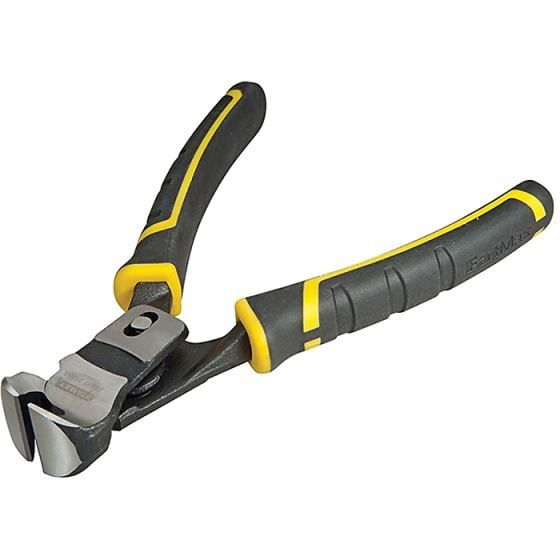The Science Behind Gripping Pliers: Why They're a Trade Industry Staple
The gripping pliers are designed to maximize leverage while gripping objects that are hard to hold with bare hands. Their core function is based on the principle of mechanical advantage-the force applied through the handles is amplified by the pivot point, thus enhancing the gripping power. This gives them immense utility in situations where extra clamping force is required-such as securing pipes, bolts, and metal sheets.
The Role of Jaw Design and Material Strength in Professional Trades
Its gripping efficiency depends entirely on its design and materials, with the serrated or curved jaws of a gripping plier allowing it to grip onto circular or flat shapes without slippage. You can buy Knipex gripping pliers, crafted from high-quality steel and alloy materials, hardened for enhanced durability and extended usability with reduced wear. These reasons justify why those grippers must find their way to the toolkit for mechanics, electricians, or construction people.
Why Gripping Pliers Are Essential for Precision and Efficiency in Every Task
From industrial use to household repairs, gripping pliers are very important in precision jobs. Its capability of holding any material with the right amount of grip allows for accurate cutting, welding, or screwing without movement. An electrician uses them to hold and bend wires in place for good connections, while a plumber works with tightening and loosening fittings with them. In auto repair, gripping pliers can help remove stubborn nuts and bolts.
Compare Different Gripping Types of Pliers: What Best Suited Your Trade?
Depending on the task, different gripping pliers offer benefits as follows:
Locking Pliers, or Vise-Grip Pliers: They use a mechanism to grab objects tightly without the need to apply constant hand pressure.
Needle-Nose Gripping Pliers: Suitable for finer work in tight spaces, such as circuit board assembly or what could be considered any intricate fix.
Groove-Joint Pliers: The adjustable jaws allow for gripping objects of different sizes, making them useful in plumbing and HVAC work.
Flat-Jaw Gripping Pliers: Best for holding sheet metal and flat materials securely during fabrication.
Innovations in Gripping Pliers: How Modern Designs Enhance Performance
Advances in tool manufacturing include ergonomic gripping pliers with an improved handle that reduces hand fatigue. Some come with compound lever mechanisms for easier force application for heavy-duty usage. Brands, such as the Original Knipex Gripping Pliers at Best Price, include innovative locking mechanisms and a corrosion-resistant coating to ensure great performance and durability.
Conclusion
Gripping pliers are an indispensable tool for any professional or do-it-yourself enthusiast. With their secure hold on objects and durability, it is impossible to work without them in many different industries. You could be an electrician, mechanic, plumber, or metalworker; whatever your trade, high-quality gripping pliers will make all the difference in how efficiently and accurately you can accomplish every task.
FAQs
1. What are the differences between gripping pliers and regular pliers?
Gripping pliers have stronger jaws and often include a locking mechanism to keep a tight grip, whereas regular pliers rely on constant hand pressure.
2. How do I select the best gripping pliers for my trade?
2. How do I select the best gripping pliers for my trade?
Consider jaw design, material strength, handle comfort, and whether you need a locking mechanism based on your specific trade.
3. Are Knipex Gripping Pliers worth the investment?
3. Are Knipex Gripping Pliers worth the investment?
Yes, Knipex Gripping Pliers are good at durability, precision, and quality construction, and thus professionally preferable.
4. Are the gripping pliers useful for cutting?
4. Are the gripping pliers useful for cutting?
Though gripping pliers are primarily constructed for holding, some have barbs at the ends for snipping wires and other materials.
5. How do I keep my gripping pliers usable over many years?
5. How do I keep my gripping pliers usable over many years?
Clean the gripping pliers regularly and keep the pivot points lubricated. Also, store them somewhere dry so that they don't rust or degrade.
Sonia is a passionate and experienced blogger who holds professional experience in content creation. She has over five years of experience, with a portfolio of 3,000+ blogs on different tools, the applications they have, and how they work. Sonia puts together creativity and research to make readers make decisions on the choices for their tools and trades.
Author
Sonia is a passionate and experienced blogger who holds professional experience in content creation. She has over five years of experience, with a portfolio of 3,000+ blogs on different tools, the applications they have, and how they work. Sonia puts together creativity and research to make readers make decisions on the choices for their tools and trades.





.jfif)




Comments
Post a Comment